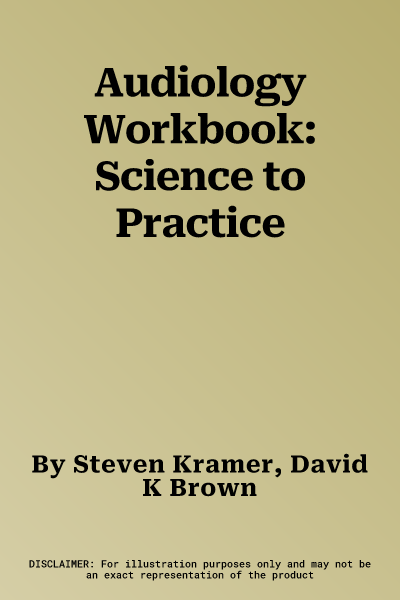Audiology Workbook, Fourth Edition is a companion study aid to the
textbook, Audiology: Science to Practice, Fourth Edition. It can also
serve as an appropriate supplement to other introductory audiology
textbooks or class lectures. The Audiology Workbook focuses on
exercises and questions in hearing and vestibular science and audiology
clinical principles and procedures that are beneficial for students in
an undergraduate communication science and disorders program and those
in a graduate-level AuD program. It is also a great study resource for
the Audiology Praxis Exam.
The fourth edition is composed of an abundance of questions and
activities designed to reinforce students' knowledge of concepts and
procedures that are, traditionally, difficult to master. There are
questions and activities on 1) properties of sound, such as drawing
waveforms; calculating frequencies/periods, amplitudes, and phases, 2)
anatomy and physiology of the auditory and vestibular systems, including
diagrams to label, 3) procedures for obtaining pure-tone thresholds and
interpreting/describing audiograms, 4) masking for pure-tone and speech
tests, 5) performing and interpreting speech test, tympanograms,
wideband acoustic immittance, and acoustic reflexes, 6) understanding
and interpreting evoked physiologic responses, including OAEs, ABRs, and
VEMP, 7) clinical case studies for common hearing and balance disorders,
and 8) treatment, including hearing aids, implantable devices, cerumen
management, tinnitus, and aural (re)habilitation.
The exercises are comprehensive and designed so they may be solved with
relatively short answers and useful for group discussion. The popular
exercises from previous editions have been retained, updated, and
expanded, including those on audiogram interpretation, masking,
immittance, and case studies. Comprehensive answers are also included
for each chapter.
New to the Fourth Edition
- Expanded exercises on the scientific foundations from the previous
edition as well as new questions added on wavelength, resonance,
decibels, signal-to-noise ratio, complex vibrations, stages of
transduction through the auditory system, and psychoacoustics.
- Many new and revised figures of auditory and vestibular anatomy.
- New exercises related to clinical topics, including preparation for
patient testing, case history, wideband acoustic immittance and evoked
physiologic responses.
- New chapter with exercises on hearing aids, assistive listening
technologies (HATS), and implantable devices.
- Each chapter now ends with a set of multiple-choice questions.

